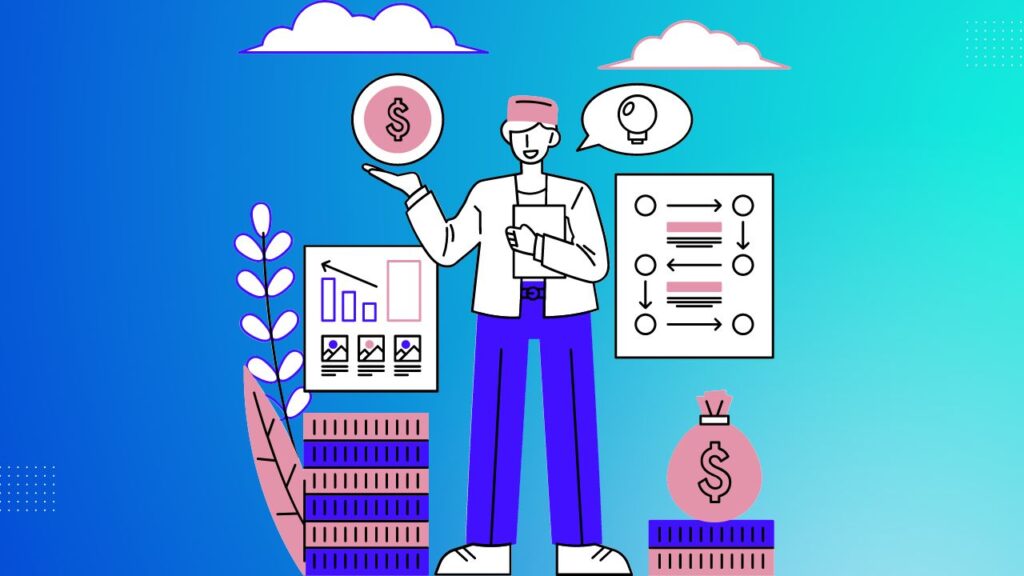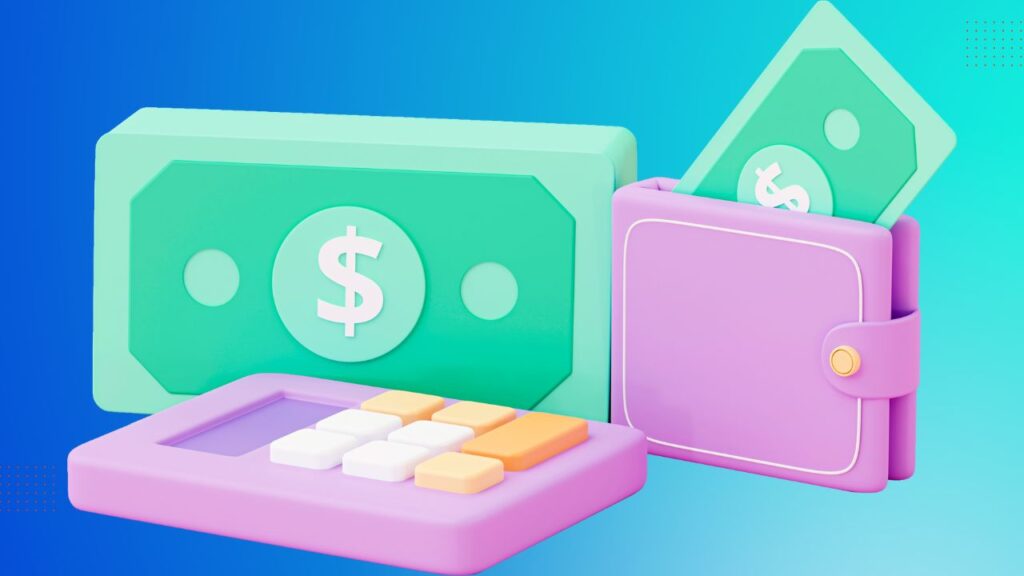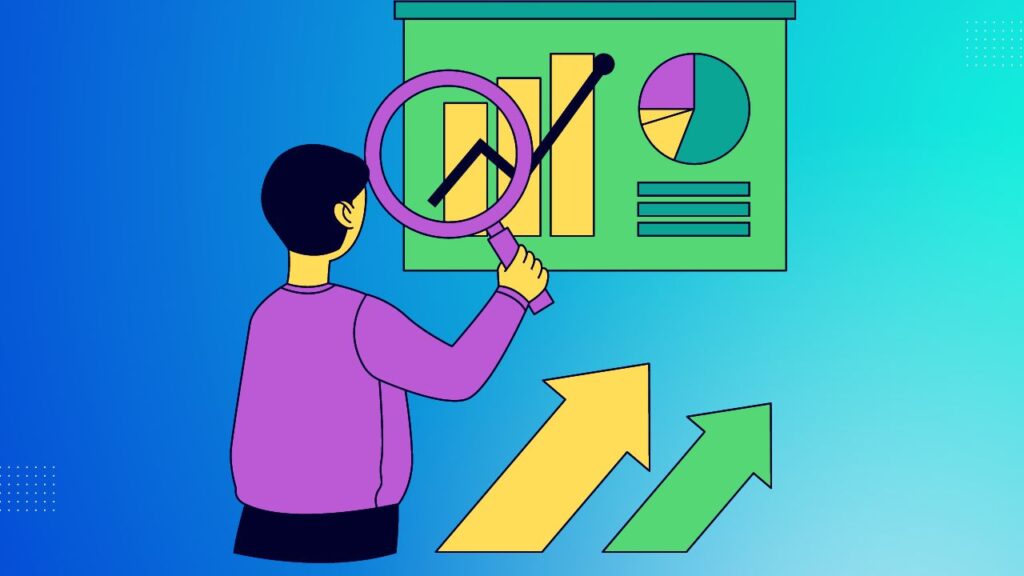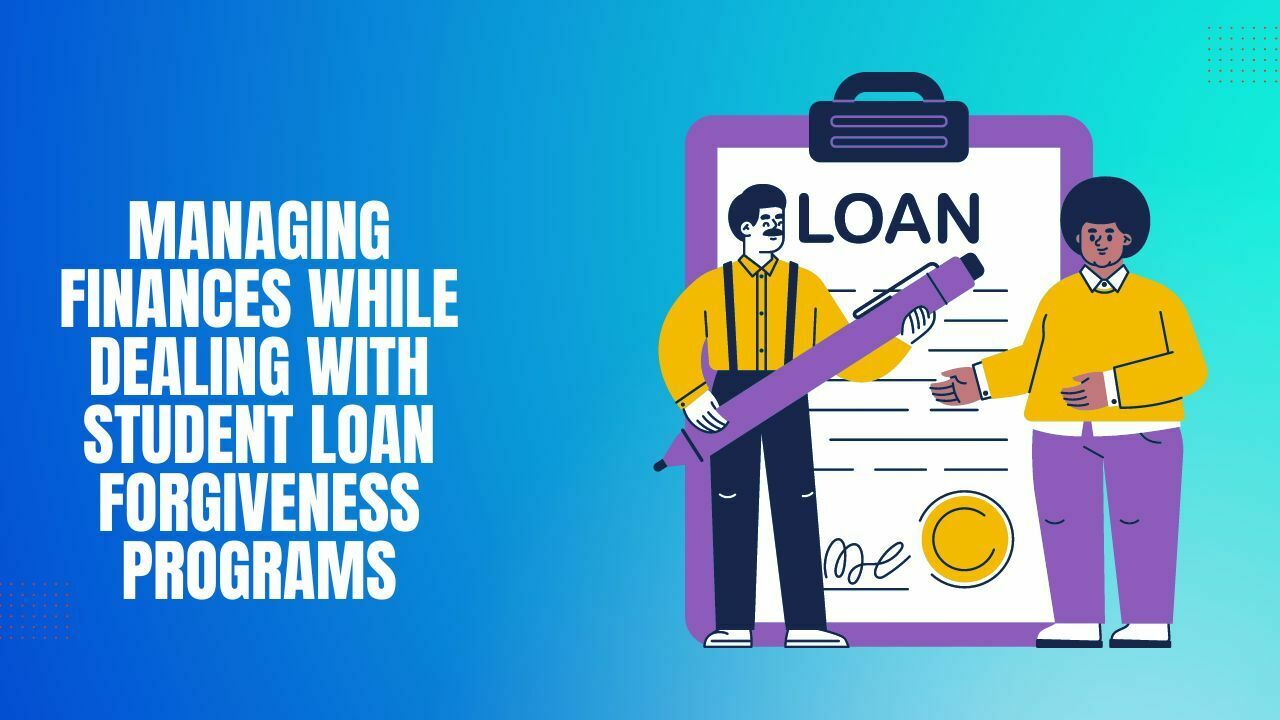Let’s dive into a topic that hits close to home for many of us—student loan forgiveness programs and the strategies for managing our finances while dealing with them.
It’s no secret that student loan debt has become a significant burden for our generation, hindering our financial progress and delaying important milestones like buying a home or starting a family.
Let’s talk numbers for a moment. Did you know that the total student loan debt in the United States has skyrocketed to over $1.76 trillion?
That’s a staggering amount, and we must take control of our finances amidst this daunting reality.
But don’t worry. There is hope, and that’s where financial management comes into play.
By implementing effective strategies, we can navigate the complexities of student loan forgiveness programs and work towards a brighter financial future.
Effective financial management during student loan forgiveness programs involves budget prioritization, exploring income-driven repayment options, and leveraging eligible professions or public service work for maximum forgiveness benefits.
In this article, we’ll explore proven strategies backed by research and expert advice to help you tackle your student loan debt head-on while still achieving your financial goals.
We’ll delve into topics like establishing a strong financial foundation, maximizing the benefits and opportunities available to you, and long-term financial planning that sets you up for success.
Not only will we cover practical tips on managing your debts and finances, but we’ll also discuss ways to minimize the stress and emotional toll that student loans can have on our lives.
Trust me, I’ve been there, and I know firsthand the impact it can have on our mental well-being.
Let’s get started!
1. Financial Strategies for Success in Student Loan Forgiveness Programs

1.1 Establishing a Strong Financial Foundation
Let’s dive into the financial strategies that will set you up for success in student loan forgiveness programs.
Building a strong financial foundation is crucial to effectively manage your finances and tackle your student loan debt head-on.
So, let’s start with the first step: establishing a strong financial foundation.
1.1.1 Budgeting for Effective Financial Management
Budgeting is the cornerstone of financial success, especially when dealing with student loan forgiveness programs.
It helps you keep track of your income, expenses, and debt payments.
Remember, the goal is to allocate your income in a way that allows you to meet your essential needs, pay off debt, and save for the future.
Be mindful of your spending habits and make adjustments as needed.
1.1.2 Creating a Realistic Repayment Plan
To effectively manage your student loan debt, it’s crucial to create a realistic repayment plan.
Here’s how you can do it:
- Assess your loan details: Gather information about your loan balance, interest rate, repayment options, and loan forgiveness programs available to you.
- Explore loan forgiveness options: Research and understand the eligibility criteria and requirements for different loan forgiveness programs. Evaluate if they align with your career goals and financial situation.
- Calculate repayment capacity: Determine how much you can afford to pay each month towards your student loans while considering your income, expenses, and other financial obligations.
- Choose a repayment strategy: Based on your assessment, select a repayment strategy that suits your financial goals. Options may include income-driven repayment plans, debt snowball, or debt avalanche methods.
- Stick to the plan: Once you have a repayment plan in place, commit to it and make timely payments. Consider setting up automatic payments to avoid missing deadlines and potential penalties.
Remember, managing your finances effectively while dealing with student loan forgiveness programs requires discipline, patience, and a realistic plan.
By budgeting wisely and creating a repayment strategy that works for you, you’ll be well on your way to financial success.
1.2 Maximizing Benefits and Opportunities
1.2.1 Exploring Loan Forgiveness and Repayment Options
When it comes to student loan forgiveness programs, it’s essential to explore the available options that could potentially reduce or eliminate your debt.
Here are some key aspects to consider:
Table: Loan Forgiveness and Repayment Options Comparison
| Program | Eligibility Criteria | Forgiveness Amount | Repayment Period | Additional Requirements |
| Public Service Loan Forgiveness | Full-time employment in qualifying public service jobs | Up to 100% of the remaining balance after 120 qualifying payments | 10 years | Submitting employment certification annually |
| Teacher Loan Forgiveness | Teaching in low-income schools or educational service agencies | Up to $17,500 in forgiveness for certain highly qualified teachers | 5 years | Meeting specific teaching requirements |
| Income-Driven Repayment Plans | Based on income and family size, payments are recalculated annually | Forgiveness after 20 or 25 years of qualifying payments | 20 or 25 years | Demonstrating financial hardship |
Research and understand the eligibility criteria, forgiveness amounts, repayment periods, and any additional requirements for these programs.
By identifying which options align with your career goals and financial situation, you can make informed decisions to maximize your benefits.
1.2.2 Leveraging Income-Driven Repayment Plans
Income-driven repayment plans can be a game-changer for managing student loan debt.
These plans base your monthly payments on your income and family size.
Here’s what you need to know:
- Income-Driven Repayment (IDR) plans include options like Income-Based Repayment (IBR), Pay As You Earn (PAYE), and Revised Pay As You Earn (REPAYE).
- These plans calculate your monthly payments as a percentage of your discretionary income, typically capped at 10% to 20%.
- Depending on the plan, any remaining balance after 20 or 25 years of qualifying payments may be forgiven.
By enrolling in an income-driven repayment plan, you can potentially lower your monthly payments and free up funds for other financial goals.
Remember to recertify your income annually to ensure your payments reflect any changes in your financial situation.
1.2.3 Capitalizing on Employer Student Loan Assistance Programs
Many employers now offer student loan assistance programs as part of their benefits package.
Take advantage of these opportunities to accelerate your student loan repayment.
Here’s how:
- Check with your employer to see if they provide any student loan assistance programs, such as direct payments towards your loans or employer contributions to your loan balance.
- If your employer offers a matching contribution, be sure to contribute enough to take full advantage of the match. It’s like getting free money toward your loans!
2. Long-Term Financial Planning for Student Loan Forgiveness Program Participants

2.1 Setting Financial Goals
2.1.1 Defining Short-Term and Long-Term Objectives
When it comes to financial planning, it’s essential to have both short-term and long-term objectives in mind.
Short-term goals typically cover a period of one to three years, while long-term goals focus on five years or more.
For student loan forgiveness program participants, here’s how you can define your goals:
Short-Term Objectives:
- Paying off high-interest debt: Start by prioritizing any debts with high-interest rates, such as credit card debt or private loans.
- Building an emergency fund: Aim to save at least three to six months’ worth of living expenses in case of unexpected financial setbacks.
- Making regular loan payments: Stay on track with your monthly loan payments to maintain eligibility for the forgiveness program.
- Budgeting and tracking expenses: Establish a budget that aligns with your financial goals and track your expenses to ensure you’re on the right path.
Long-Term Objectives:
- Maximizing forgiveness benefits: Familiarize yourself with the requirements of the forgiveness program and plan your finances accordingly to maximize the amount forgiven.
- Saving for retirement: Don’t neglect your future! Allocate a portion of your income towards retirement savings, such as contributing to a 401(k) or IRA.
- Investing for wealth creation: Consider investing in low-cost index funds or other investment vehicles to grow your wealth over the long term.
- Building a down payment for a home: If homeownership is on your radar, start saving for a down payment early on to achieve this long-term objective.
2.1.2 Prioritizing Debt Repayment and Savings Goals
To effectively manage your finances while participating in the student loan forgiveness program, it’s crucial to prioritize both debt repayment and savings goals.
Here’s how you can strike the right balance:
- Analyze your debt: Take a close look at your outstanding loans, their interest rates, and repayment terms. Prioritize paying off high-interest debt first, as it can save you money in the long run.
- Create a debt repayment plan: Develop a plan that outlines how much you’ll allocate towards loan payments each month, considering both the minimum payments required and any additional amounts you can contribute.
- Automate your payments: Set up automatic payments for your loans to ensure you don’t miss any deadlines and avoid late fees or penalties.
- Establish a savings plan: Determine how much you can comfortably save each month and set up automatic transfers to a separate savings account or an emergency fund.
- Take advantage of employer benefits: If your employer offers any retirement savings matching contributions, make sure to take full advantage of them to accelerate your savings.
- Adjust as your income grows: As your income increases over time, consider allocating a portion of those additional funds towards your savings or loan repayment goals.
2.2 Building Emergency Funds and Savings
2.2.1 Creating a Solid Safety Net for Unexpected Expenses
When it comes to unexpected expenses, having an emergency fund is a lifesaver.
Here’s how you can create a solid safety net:
- Set a savings target: Aim to save three to six months’ worth of living expenses. This will provide a cushion in case of job loss, medical emergencies, or other unforeseen events.
- Start small: Don’t feel overwhelmed if you can’t save the entire amount right away. Begin by setting aside a small portion of your income each month and gradually increase it.
- Automate your savings: Make it easier on yourself by automating regular transfers from your checking account to a separate savings account. This way, you won’t even have to think about it.
- Consider high-yield savings accounts: Look for savings accounts that offer higher interest rates to maximize the growth of your emergency fund over time.
- Resist the temptation to dip into your emergency fund: Remember, this fund is strictly for emergencies. Try to avoid using it for non-essential expenses to ensure it remains intact.
2.2.2 Strategies for Saving While Repaying Student Loans
Finding ways to save money while paying off your student loans is crucial.
Here are some strategies to consider:
- Evaluate your expenses: Take a close look at your monthly spending and identify areas where you can cut back. Look for subscriptions you don’t use, dining out habits, or unnecessary expenses that can be reduced.
- Budget effectively: Create a budget that allows you to allocate a portion of your income towards savings while still meeting your loan repayment obligations. Prioritize both goals within your budget.
- Explore refinancing options: If you have high-interest student loans, consider refinancing them to potentially secure a lower interest rate. This can help you save money on interest over the long term.
- Take advantage of loan forgiveness programs: While working towards loan forgiveness, explore options such as Public Service Loan Forgiveness (PSLF). If eligible, this program can provide forgiveness after 10 years of working in qualifying public service jobs.
- Increase your income: Look for opportunities to boost your income, such as taking on a side hustle or pursuing career advancement. Allocate any extra income towards your savings or loan repayment goals.
By building an emergency fund and employing smart savings strategies, you’ll have a strong financial foundation while dealing with your student loans.
Remember, it’s all about finding a balance and making consistent progress toward your goals.
Stay focused, stay disciplined, and you’ll be on the path to financial success!
2.3 Investing and Growing Wealth
2.3.1 Understanding Investment Options and Risk Levels
When it comes to investing, it’s essential to understand different options and their associated risk levels.
Here’s what you need to know:
- Stock market: Investing in stocks allows you to become a partial owner of a company. It offers potential long-term growth but comes with higher risk.
- Bonds: Bonds are fixed-income securities where you lend money to governments or corporations in exchange for periodic interest payments. They tend to be lower risk compared to stocks.
- Index funds: These are investment funds that track a specific market index, such as the S&P 500. They provide diversification and a more passive investment approach.
- Real estate: Investing in real estate can offer both income (rental payments) and potential appreciation over time. However, it requires more substantial upfront capital and can be less liquid.
- Mutual funds: Mutual funds pool money from multiple investors to invest in a diversified portfolio of stocks, bonds, or other securities. They offer a wide range of investment options.
Remember, each investment option comes with its own risk profile, and it’s important to consider your risk tolerance and time horizon when making investment decisions.
2.3.2 Balancing Debt Repayment and Investment Strategies
Finding the right balance between debt repayment and investment strategies is crucial for long-term financial planning.
Here’s how you can approach it:
- Prioritize high-interest debt: Start by paying off any high-interest debt, such as credit cards or private loans, before focusing on investments. High-interest rates can eat into your returns.
- Consider the interest rate on student loans: If your student loan interest rates are relatively low, it may make sense to prioritize investing over aggressively paying down your loans. You could potentially earn higher returns in the market than the interest you would save by paying off low-interest debt.
- Maximize retirement contributions: If your employer offers a retirement plan, such as a 401(k), contribute enough to take full advantage of any employer-matching contributions. This is essentially free money and can boost your long-term savings.
- Diversify your investments: Spread your investments across different asset classes, such as stocks, bonds, and real estate, to mitigate risk. Diversification helps protect your portfolio during market fluctuations.
- Review your investment strategy periodically: As your financial situation and goals evolve, it’s important to review your investment strategy regularly and make adjustments as needed.
Remember, investing is a long-term game, and it’s important to stay disciplined and patient.
Consider seeking advice from a financial advisor who can help you navigate your specific situation.
3. Managing Debts and Finances During Student Loan Forgiveness Programs

3.1 Optimizing Debt Repayment Strategies
When it comes to paying off your debts efficiently, two popular methods are the snowball and avalanche approaches.
Let’s take a closer look at each:
3.1.1 Snowball vs. Avalanche Method: Choosing the Right Approach
The snowball method involves paying off your debts starting with the smallest balance first while making minimum payments on the rest.
Once the smallest debt is paid off, you move on to the next smallest one, and so on.
This method provides a psychological boost as you see debts being eliminated one by one.
On the other hand, the avalanche method focuses on paying off debts with the highest interest rates first.
By tackling the debts with the highest interest, you can save more money in the long run.
It may take longer to see progress compared to the snowball method, but you’ll save on interest payments.
So, which approach should you choose?
Well, it depends on your personal preference. The snowball method might be a good fit if you’re motivated by quick wins and the psychological boost of paying off debts.
However, if you’re more focused on minimizing interest payments and saving money, the avalanche method is worth considering.
3.1.2 Consolidation and Refinancing Options
Consolidation and refinancing can be useful tools to manage your debts and potentially reduce interest rates.
Let’s explore your options:
Consolidation:
Student loan consolidation involves combining multiple loans into a single loan with one monthly payment.
This can simplify your finances and make it easier to keep track of your payments.
Additionally, consolidation may offer the opportunity to extend your repayment term, resulting in lower monthly payments.
However, it’s important to note that extending the repayment term may increase the total amount you pay in interest over time.
Refinancing:
Refinancing allows you to replace one or more loans with a new loan, ideally at a lower interest rate.
This can help you save money on interest over the life of the loan.
To qualify for refinancing, you typically need a good credit score and a stable income.
It’s important to carefully consider the terms and conditions of the new loan before proceeding.
Here’s a table summarizing the key points:
| Snowball Method | Avalanche Method | |
| Approach | Start with the smallest debt | Start with the highest interest rate |
| Pros | Quick wins, a psychological boost | Minimize interest payments, save money |
| Cons | May not save as much on interest | Longer time to see progress |
| Suitable for | Those motivated by quick wins | Those focused on saving money |
Remember, every individual’s financial situation is unique.
Consider your own priorities and goals when deciding on the best approach for managing your debts.
3.2 Financial Stress Management
Dealing with debt can take a toll on your mental well-being. It’s important to address the psychological effects and seek support when needed.
Here are a couple of ways to manage financial stress:
3.2.1 Coping with the Psychological Effects of Debt
Being in debt can cause anxiety, depression, and feelings of overwhelm.
Here are some strategies to cope with the psychological effects:
- Stay positive: Focus on the progress you’re making and celebrate small victories along the way. Remember, you’re taking steps toward a better financial future.
- Practice self-care: Engage in activities that help reduce stress, such as exercise, meditation, or spending time with loved ones. Taking care of your mental and physical health is crucial during this time.
- Educate yourself: Increase your financial literacy by reading books, listening to podcasts, or attending workshops. The more you understand about personal finance, the more empowered you’ll feel to tackle your debts.
3.2.2 Seeking Professional Financial Counseling and Support
If you’re feeling overwhelmed or struggling to manage your finances, don’t hesitate to seek professional help.
Here are some options to consider:
Financial counseling:
Certified financial counselors can provide personalized guidance and advice based on your specific situation.
They can help you create a budget, develop a debt repayment plan, and provide strategies to manage your finances effectively.
Support groups:
Connecting with others who are going through similar situations can provide a sense of community and support.
Consider joining local or online support groups where you can share experiences, gain insights, and receive encouragement.
Mental health support:
If you find that your mental health is significantly impacted by your financial situation, it’s important to seek help from a mental health professional.
They can provide therapy or counseling to help you navigate through the emotional aspects of dealing with debt.
Remember, you’re not alone in this journey. Seeking support and guidance can make a significant difference in managing financial stress and staying on track toward your goals.

4.1 Maintaining Financial Discipline and Accountability
To make the most of your student loan forgiveness program and stay on top of your finances, consider the following strategies:
4.1.1 Tracking Expenses and Maintaining a Spending Plan
Tracking your expenses is essential to understand where your money is going and make informed financial decisions.
Here’s how you can do it effectively:
- Create a budget: Start by listing your income and fixed expenses such as rent, utilities, and loan payments. Allocate a portion of your income towards savings and discretionary spending.
- Track your expenses: Use apps or budgeting tools to monitor your spending habits. Categorize your expenses to identify areas where you can cut back and save more.
- Review regularly: Set aside time each month to review your budget and track your progress. Adjust your spending plan as needed to ensure you’re staying within your means.
4.1.2 Avoiding Impulsive Purchases and Lifestyle Inflation
It’s easy to give in to impulsive purchases and lifestyle inflation, but these can hinder your progress.
Here are some tips to avoid falling into these traps:
- Set financial goals: Define your short-term and long-term financial goals. Having a clear vision of what you want to achieve can help you resist impulsive purchases that may derail your progress.
- Practice delayed gratification: Before making a purchase, give yourself time to think it over. Consider whether it aligns with your goals and if it’s truly necessary.
- Be mindful of lifestyle inflation: As your income increases, avoid the temptation to immediately upgrade your lifestyle. Instead, focus on saving and investing more to secure your financial future.
4.2 Monitoring and Reviewing Loan Forgiveness Programs
To ensure you’re making the most of your student loan forgiveness program, consider the following strategies:
4.2.1 Staying Updated on Program Requirements and Changes
Student loan forgiveness programs may have specific requirements and eligibility criteria.
Here’s how you can stay informed:
- Research and review: Regularly check the official websites of your loan servicers and government agencies responsible for the forgiveness programs. They often provide updates, changes, and additional information about the programs.
- Subscribe to newsletters and updates: Sign up for newsletters or notifications from reputable sources that specialize in student loan forgiveness and personal finance. This way, you’ll receive timely updates and important news about program requirements.
- Seek professional advice: If you’re unsure about any aspect of the program or want personalized guidance, consider consulting a student loan specialist or financial advisor. They can help you navigate the intricacies of the programs and provide tailored advice based on your specific situation.
4.2.2 Seeking Assistance and Guidance from Student Loan Servicers
Your loan servicers are valuable resources when it comes to managing your student loans and navigating forgiveness programs.
Here’s how you can leverage their assistance:
- Contact your loan servicers: Reach out to your loan servicers directly to clarify any doubts, ask questions about the forgiveness programs, and seek guidance on the application process.
- Understand repayment options: Loan servicers can provide information on different repayment plans that align with your financial situation. They can help you choose the most suitable plan while considering the requirements of the forgiveness program.
- Document communication: Keep records of your communication with loan servicers, including phone calls, emails, and any written correspondence. This documentation can serve as evidence if any issues or disputes arise in the future.
Bottom Line…
In conclusion, when it comes to navigating the complexities of student loan forgiveness programs, smart financial management is key.
With a staggering $1.76 trillion in outstanding student loan debt in the US alone, millennials like us must stay informed and take control of our finances.
By understanding the ins and outs of these programs, setting a budget, and prioritizing debt repayment, we can make significant progress toward financial freedom.
Remember, it’s not just about forgiveness, but also about building a solid foundation for a prosperous future.
So, let’s arm ourselves with knowledge, implement effective strategies, and pave the way toward a brighter financial tomorrow.
Together, we can conquer this challenge and thrive!

2 thoughts on “Strategies for Managing Finances While Dealing With Student Loan Forgiveness Programs”